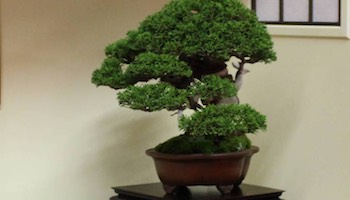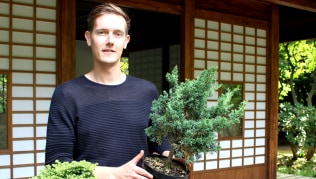The art of growing Bonsai trees originates in the Chinese Empire, and like many related art-forms, the Japanese copied and adapted it during the Kamakura period. These related art forms include stone appreciation (Suiseki), keeping koi fish (Nishikigoi) and Japanese gardening. Let's investigate these arts in more detail!
Shohin Bonsai
Experts believe that you must be able to hold the Shohin tree in one hand, indicating the exact measure of the height of the tree is not strictly important. Mame Bonsai trees are even smaller; under 4" (10cm) tall.
Japanese Koi
錦鯉 - Nishikigoi, often called Koi fish or Japanese carp, are fish with colors and patches raised and kept for appreciation. The carp originates from China and was brought to Japan by means of gifts.
Bonsai pottery
盆栽鉢 - Bonsai literally means “planted in container”, which clearly indicates the importance and inseparability of pottery and Bonsai.
Ikebana
生け花 - Ikebana (literally "giving life to flowers") is the Japanese art of flower arrangement, in which the arrangement brings nature and humanity closer together.
Suiseki
Suiseki (also called viewing stones) are often placed on delicate wooden stands or trays, called daizas and dobans, respectively. The wooden stands serve to display the stones and create an image of harmony. The stones are naturally occurring and unshaped.
Japanese gardens
日本庭園 - Japanese gardens are often part of Buddhist monasteries and Shinto shrines and therefore deeply rooted in religion. The importance of nature in Shinto beliefs is resembled in garden elements such as lakes, trees and rocks; Buddhist elements include mountains, stone groupings and seas.
Accent and companion plants
草もの - Bonsai trees are sometimes traditionally displayed in a Tokonoma, consisting of a Bonsai tree, a scroll and an accent plant (representing men, heaven and earth respectively).








